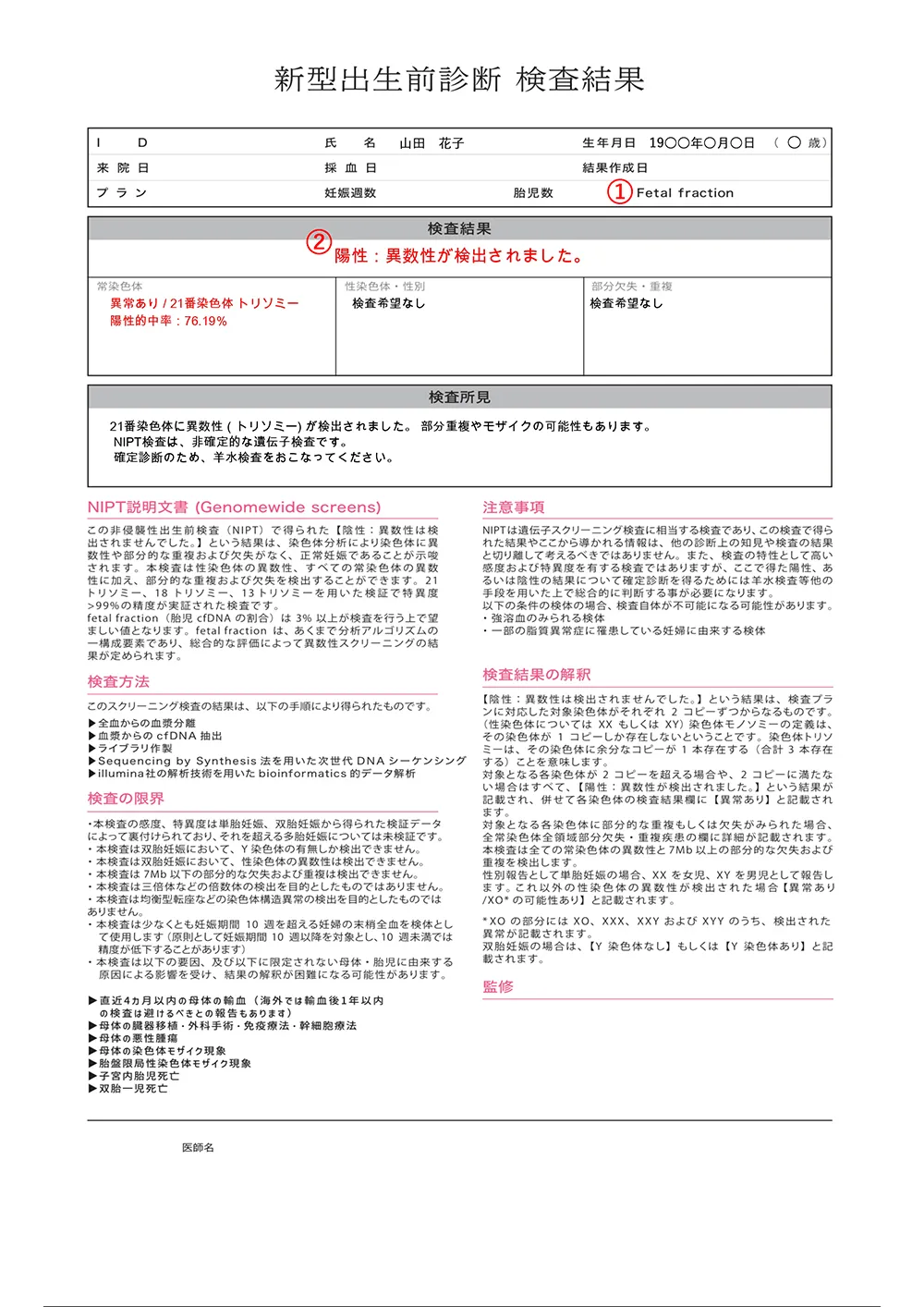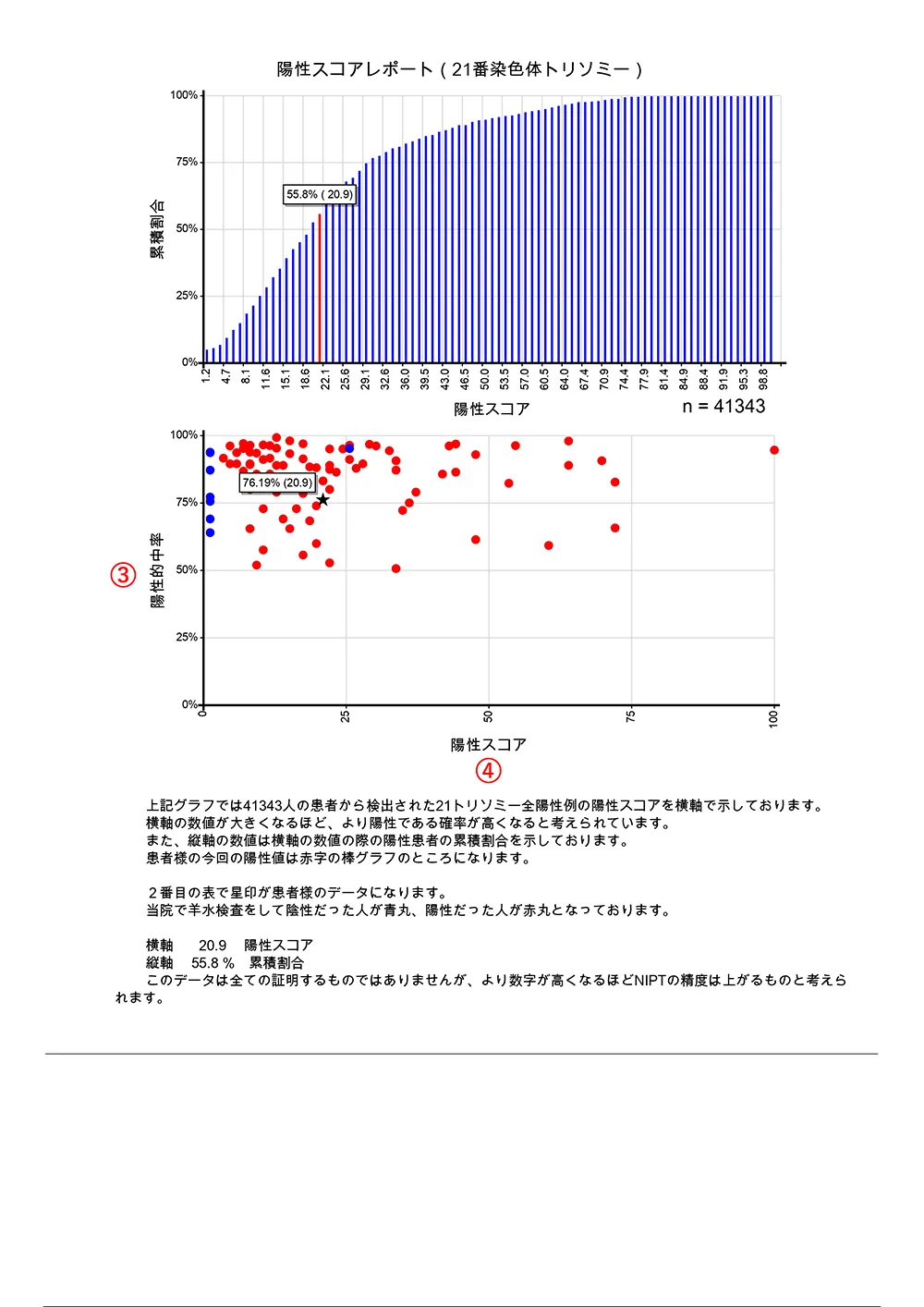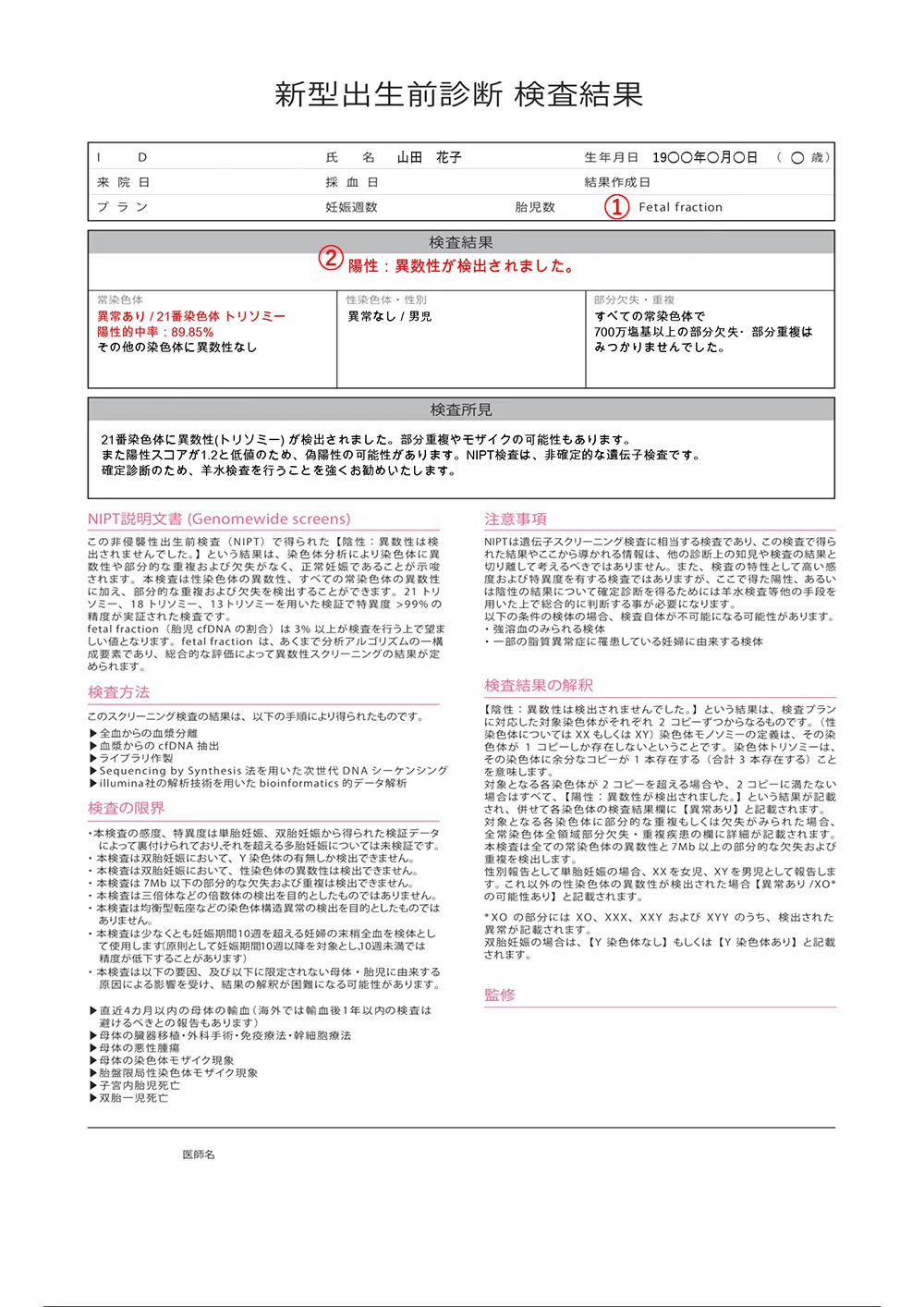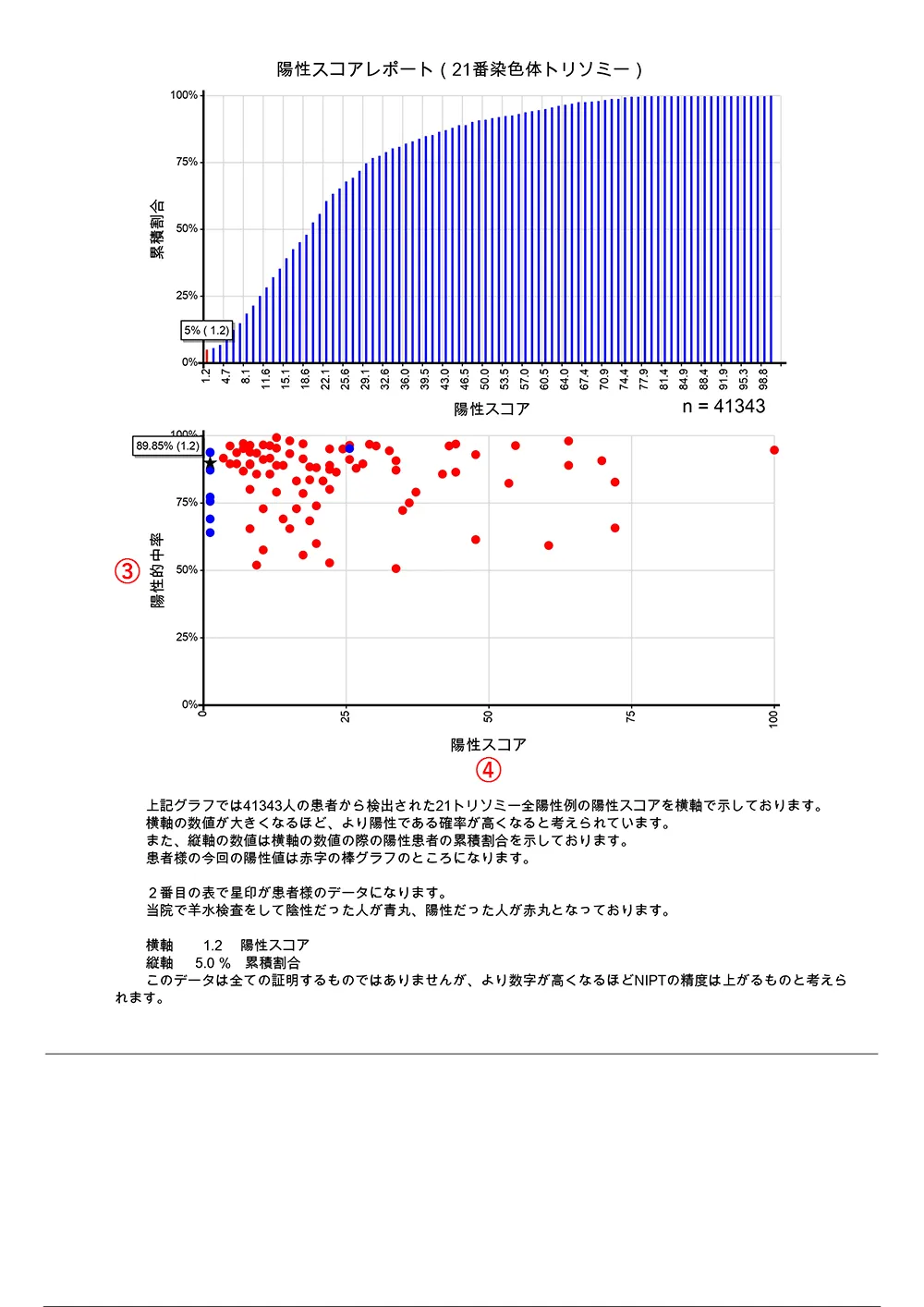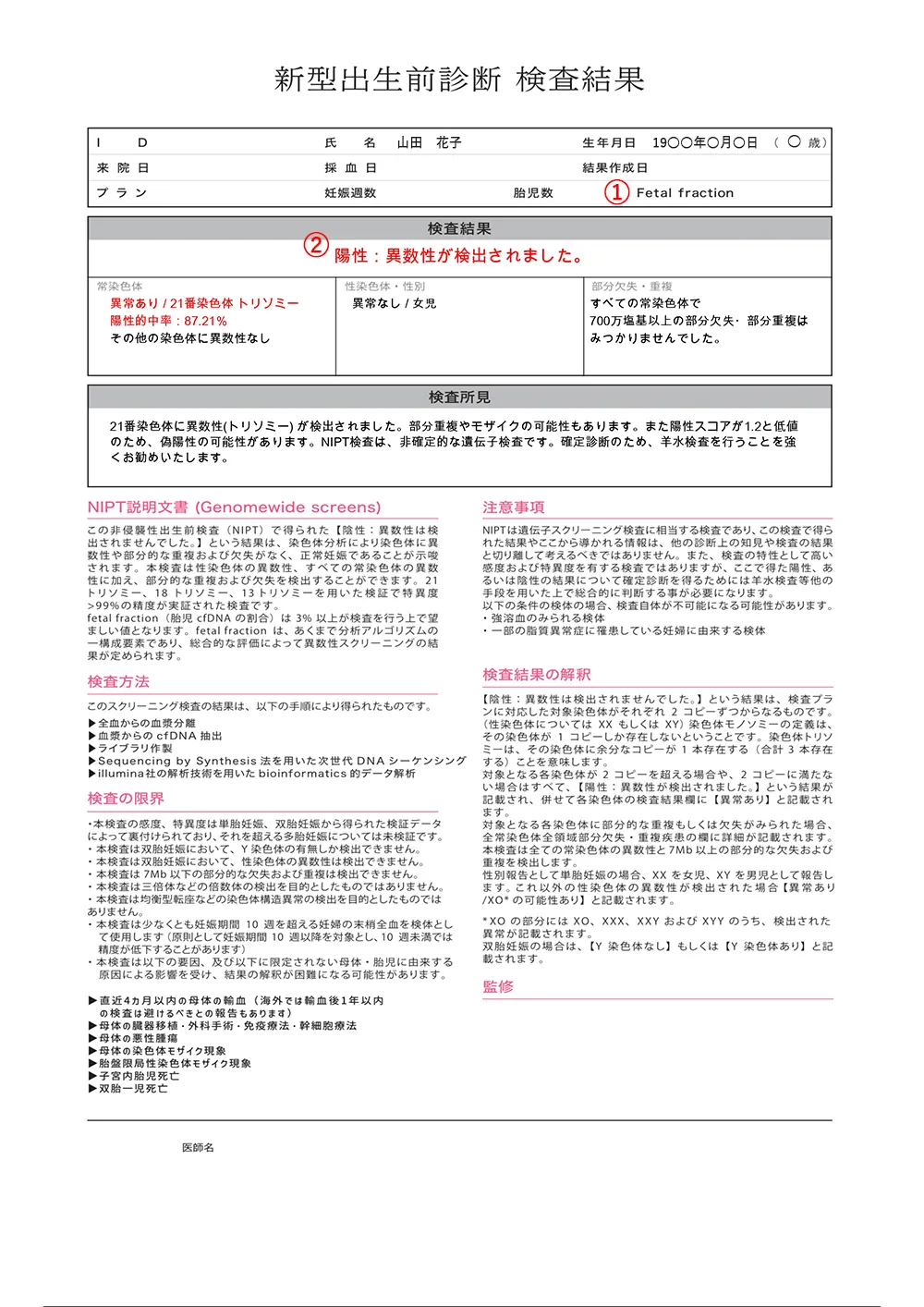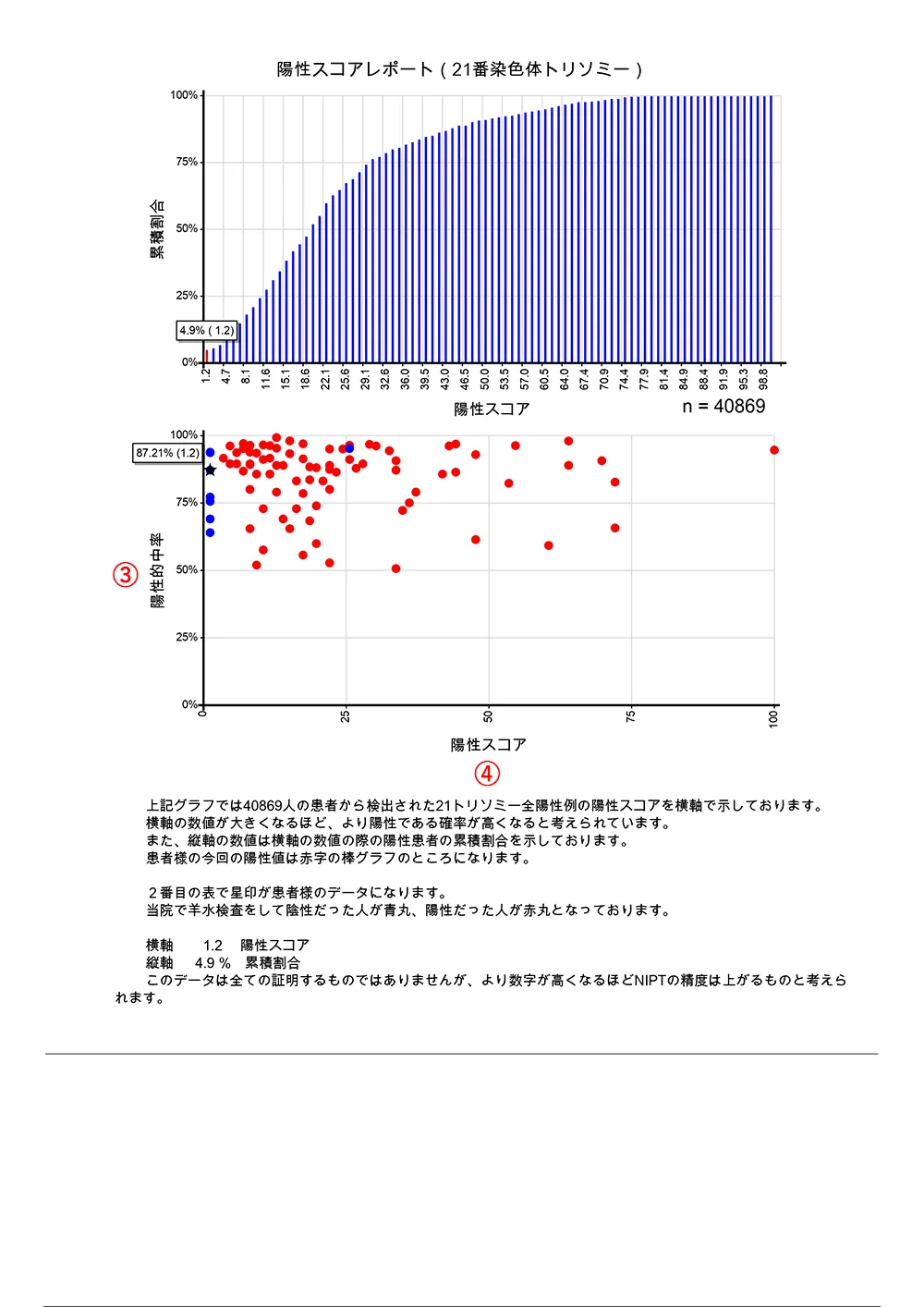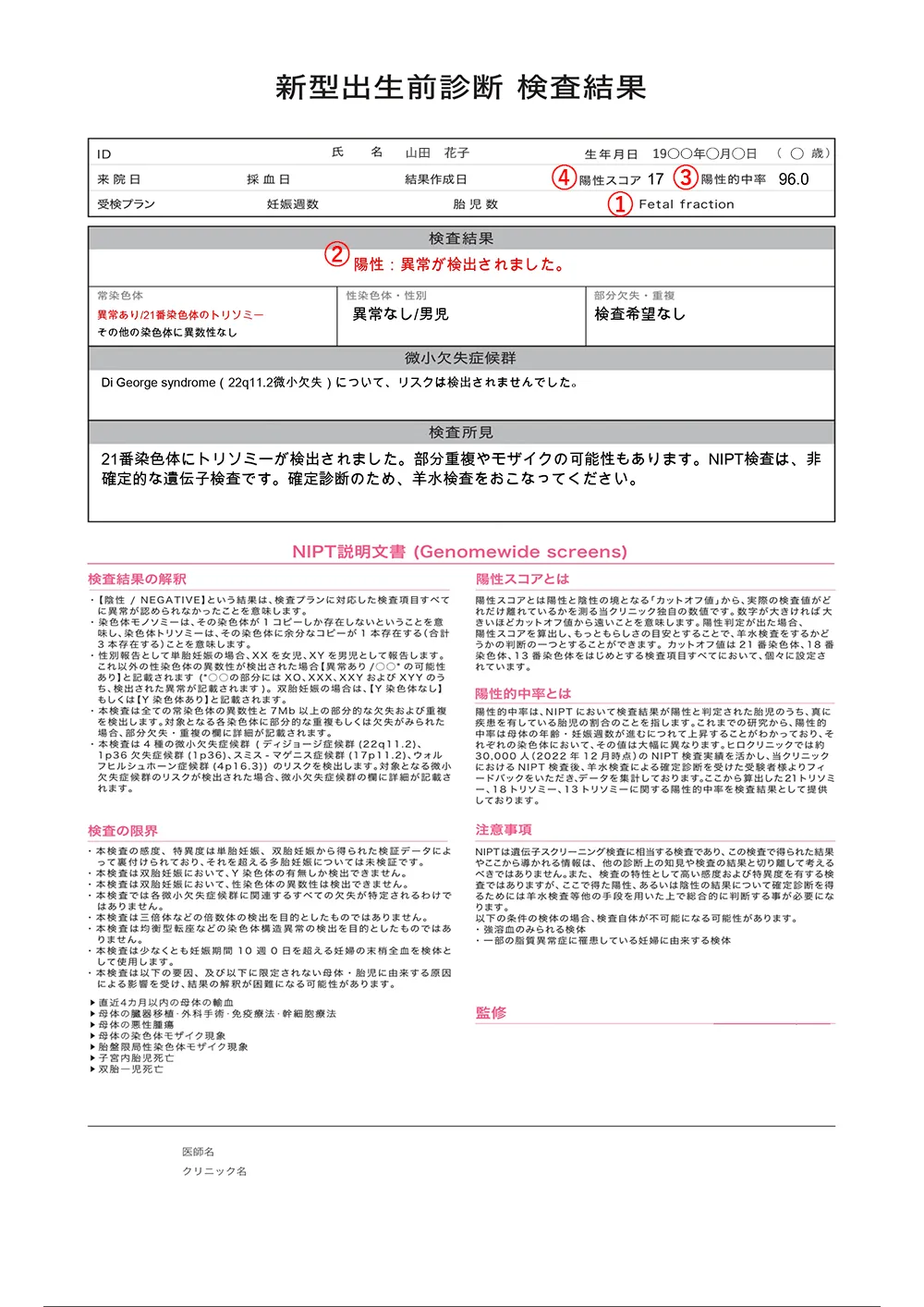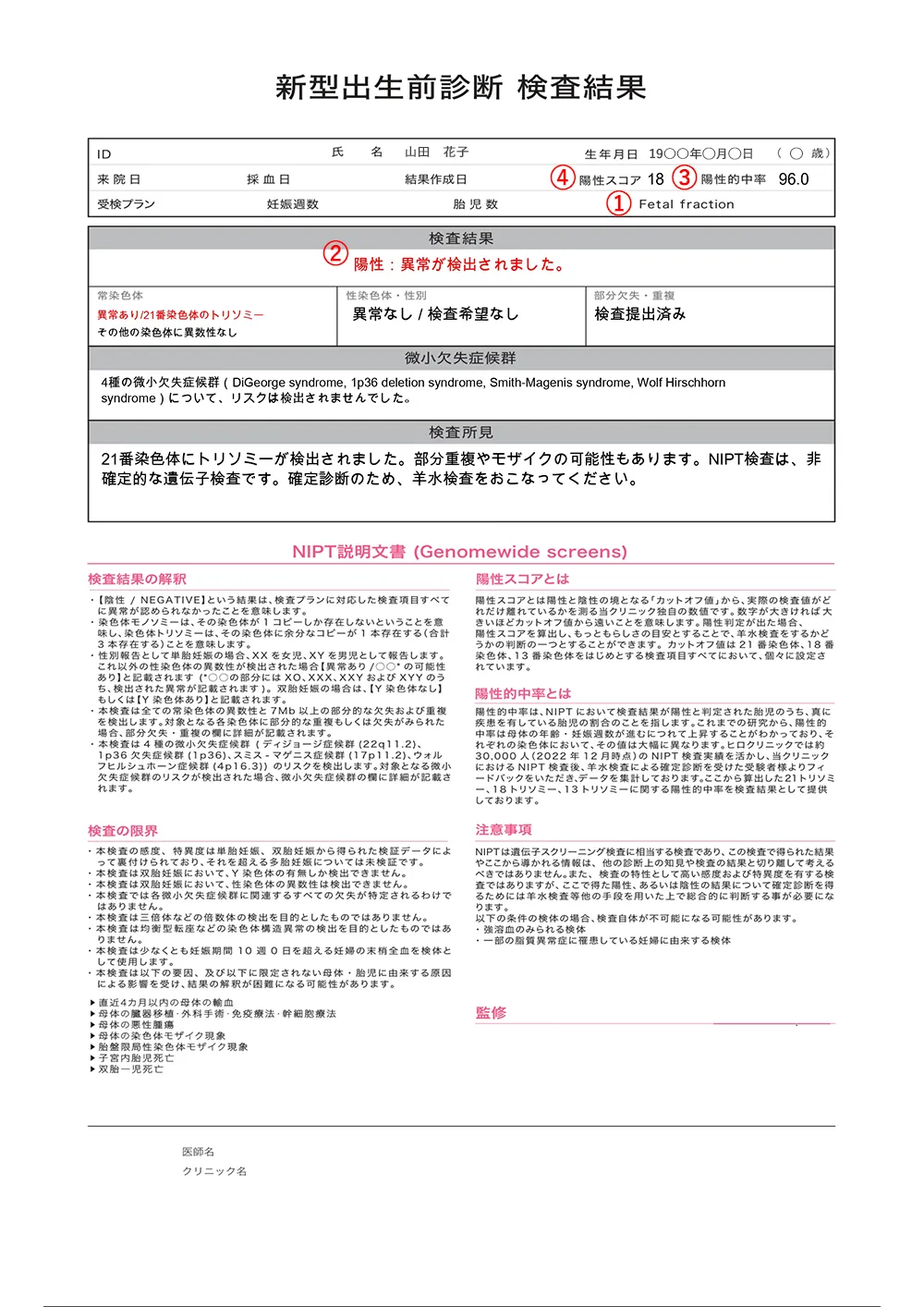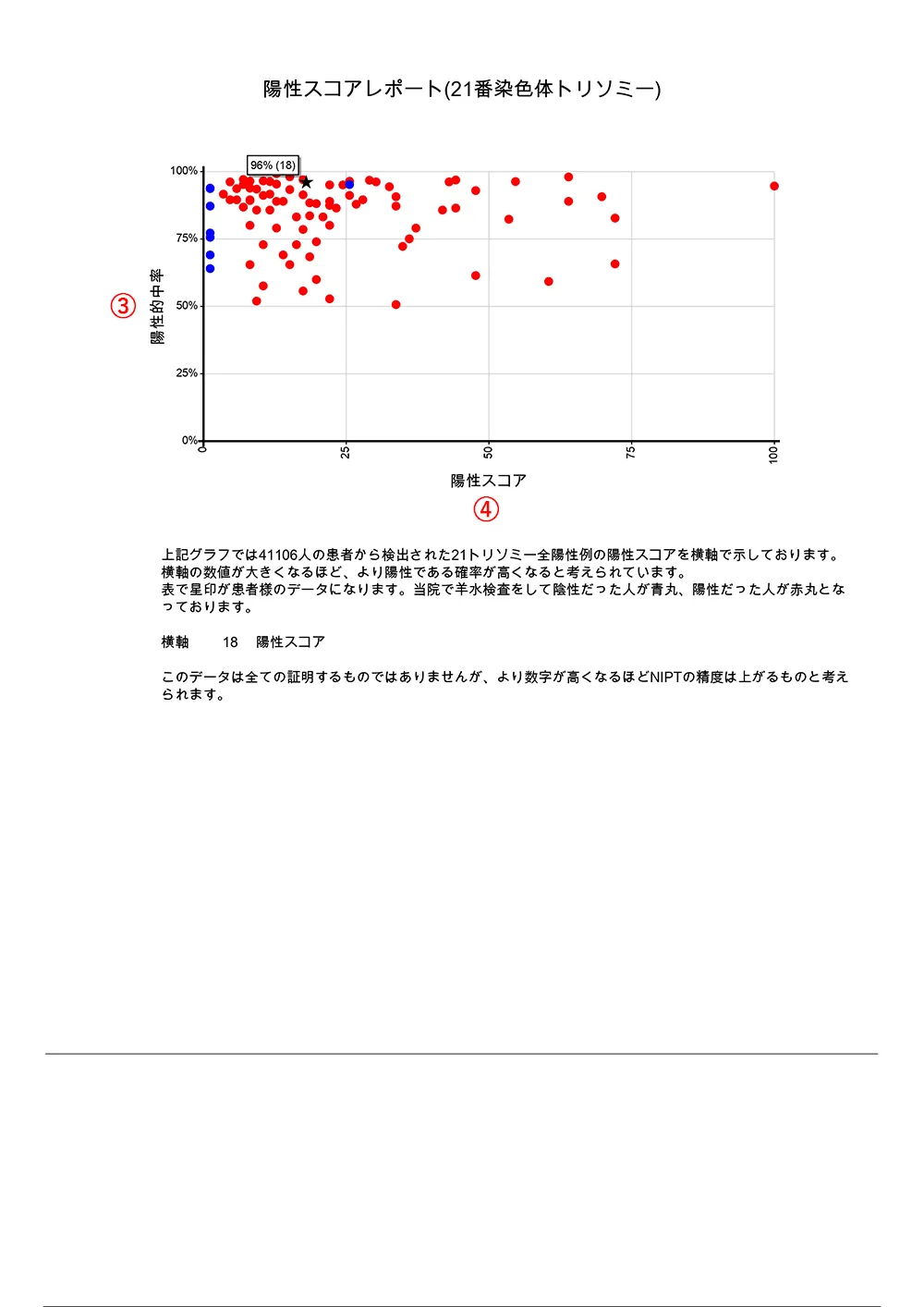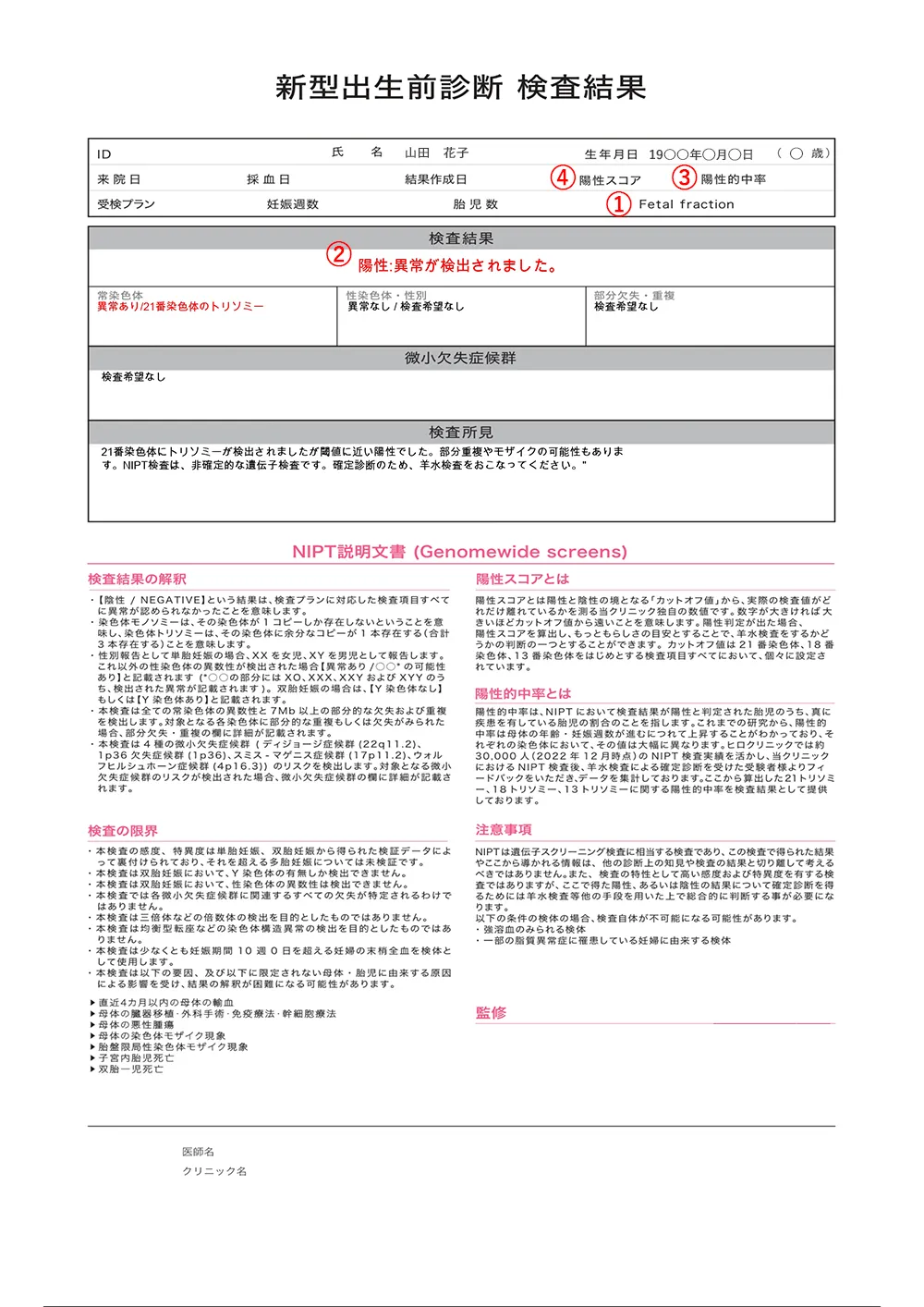NIPT
◆What is NIPT (Non-Invasive Prenatal Testing)?
NIPT (Non-Invasive Prenatal Testing) is a test that analyzes blood collected from a pregnant mother to detect chromosomal abnormalities such as Down syndrome (Trisomy 21), Edwards syndrome (Trisomy 18), and Patau syndrome (Trisomy 13). This test uses the latest technology to detect the number of all chromosomes and can also identify partial deletions and duplications. This test, known as Non-Invasive Prenatal Genetic Testing (NIPT), is a non-invasive screening test that can investigate common chromosomal disorders, sex chromosome abnormalities, and microdeletion syndromes. Additionally, through sex chromosome testing, the baby's gender may also be determined.
NIPT is characterized by its extremely high sensitivity and specificity compared to conventional prenatal screening methods, and the accuracy of the test is said to be close to 100%. However, this test does not provide a definitive diagnosis of chromosomal abnormalities; rather, it is a non-definitive test that determines whether the likelihood of having a chromosomal disorder is high (positive) or low (negative). Therefore, even if the NIPT results are positive, it is recommended to undergo confirmatory testing such as chorionic villus sampling or amniocentesis. Additionally, there is a rare possibility of false positives or false negatives.
This test is performed by analyzing fragments of DNA derived from the placenta present in the pregnant mother's blood. Since the placenta is genetically identical to the fetus, examining this DNA provides genetic information about the fetus (however, in the case of mosaicism, amniocentesis is necessary for definitive diagnosis). With the development of modern rapid genetic analysis technology, it has become easier to analyze these DNA fragments. NIPT analyzes fragments of DNA derived from the placenta that have entered the mother's bloodstream to check for chromosomal abnormalities.
In the blood of a pregnant mother, fragments of DNA derived from the placenta float, and by analyzing these fragments, early information can be obtained about the fetus's health and certain genetic disorders, making this an important option for many pregnant women.
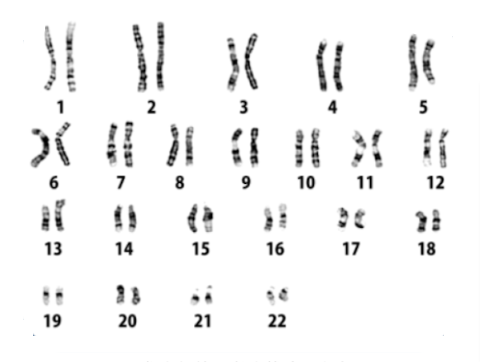
◆Principle of NIPT (Non-Invasive Prenatal Testing)
The principle of NIPT (Non-Invasive Prenatal Testing) is to examine the presence of chromosomal disorders using fragments of fetal DNA present in the mother's blood during pregnancy. In this test, fetal DNA, not maternal DNA, is analyzed. Specifically, cell-free DNA (cfDNA) derived from the placenta, which flows into the bloodstream, is collected and analyzed in detail using a machine called a sequencer. This cfDNA is used to detect the possibility of chromosomal disorders.
A sequencer is a device that reads the base sequences of DNA, and the latest technology uses next-generation sequencers (NGS). This technology accurately reads the four types of base sequences in DNA: A (adenine), T (thymine), G (guanine), and C (cytosine). Bases usually exist in pairs (A pairs with T, G pairs with C), forming the double helix structure of DNA. The sequencer reads the base sequences of extracted DNA one by one to identify genetic abnormalities.
Conventional sequencers could only read one DNA sequence at a time, which was time-consuming and labor-intensive. However, with NGS technology, it is possible to create a DNA library and read millions to billions of base sequences at once. This technology enables rapid and accurate base sequence analysis even from small amounts of DNA, allowing efficient detection of chromosomal abnormalities from small DNA samples such as fetal cfDNA.
The standard method of analysis in NIPT is the MPS method (massively parallel sequencing). This is an analysis method based on NGS, which quantitatively analyzes the amount of DNA components derived from each chromosome using the obtained fetal cfDNA. For example, if the fetus has Trisomy 21, the amount of DNA derived from chromosome 21 will be 1.5 times the normal amount.
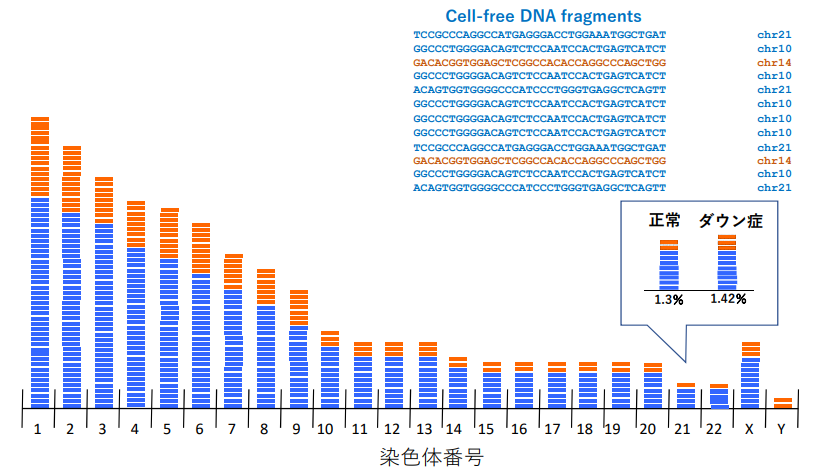
Ministry of Health, Labour and Welfare NIPT: noninvasive prenatal testing reference
◆Comparison with Conventional Prenatal Testing
Compared to conventional prenatal testing methods, NIPT is characterized by its very high sensitivity and specificity, and superior accuracy. However, the positive predictive value for Trisomy 18 and Trisomy 13 tends to be lower than that for Trisomy 21. Additionally, there is a risk of false positives (the test result is positive, but there is no actual chromosomal abnormality). Therefore, if a positive result is obtained from NIPT, it is recommended to undergo confirmatory testing such as chorionic villus sampling or amniocentesis.
◆Detection of Microchromosomal Abnormalities
Microdeletion syndromes are disorders caused by the deletion of genes at specific locations on a chromosome. These syndromes are caused by very small chromosomal changes, with the changes existing in at least 500,000 bases and typically caused by deletions in 2 to 3 million base pairs. The symptoms and severity vary depending on the location and size of the chromosomal deletion, but in many cases, they can cause symptoms such as intellectual disability and developmental delay.
Many microdeletion syndromes are thought to be spontaneous and not strongly related to maternal age. This means that these disorders can occur due to genetic factors, environmental factors, or random chromosomal changes. Therefore, the possibility of occurrence exists for pregnant women of all ages, from young to old, and it is not appropriate to limit testing to pregnant women of a specific age group.
Detecting microchromosomal abnormalities, especially microdeletion syndromes, can be difficult in general diagnostic facilities, but at our testing center, it is possible to detect these abnormalities using advanced genetic testing technology. Therefore, accurate diagnosis and management of microdeletion syndromes are recommended to be conducted in medical institutions with specialized knowledge. These tests play an important role in identifying potential risks early and providing necessary medical intervention and support.
◆NIPT Test Report Sample from Tokyo Hygiene Laboratory
Tokyo Hygiene Laboratory's Unique Detailed NIPT Reporting Process
At the Tokyo Hygiene Laboratory, operated by our company, we strive to create NIPT reports using our unique technology to clearly demonstrate the accuracy and reliability of the tests. This report first encrypts the information (including personal information) entered at the medical institution and converts it into a QR code, after which the encrypted QR code of the report content is also included in the result report. By reading both, it is confirmed whether the information matches and there are no discrepancies. Because of this thorough management, the Tokyo Hygiene Laboratory has established strict quality control standards to ensure the safety and health of the examinees and to enable medical institutions to provide accurate information.
Actual NIPT Report Samples
The following is a sample negative report of an NIPT test provided by the Tokyo Hygiene Laboratory to medical institutions. The Tokyo Hygiene Laboratory has introduced advanced testing methods from both Illumina and Medicover. Both companies offer NIPT testing, but the range of tests available differs. The Tokyo Hygiene Laboratory appropriately selects and utilizes the testing methods based on the characteristics and possible tests of each company. Through precise analysis and results based on the latest technology, the Tokyo Hygiene Laboratory provides reassurance to the examinees from the medical institutions.
-
[Negative Report when Tested with Illumina Equipment]
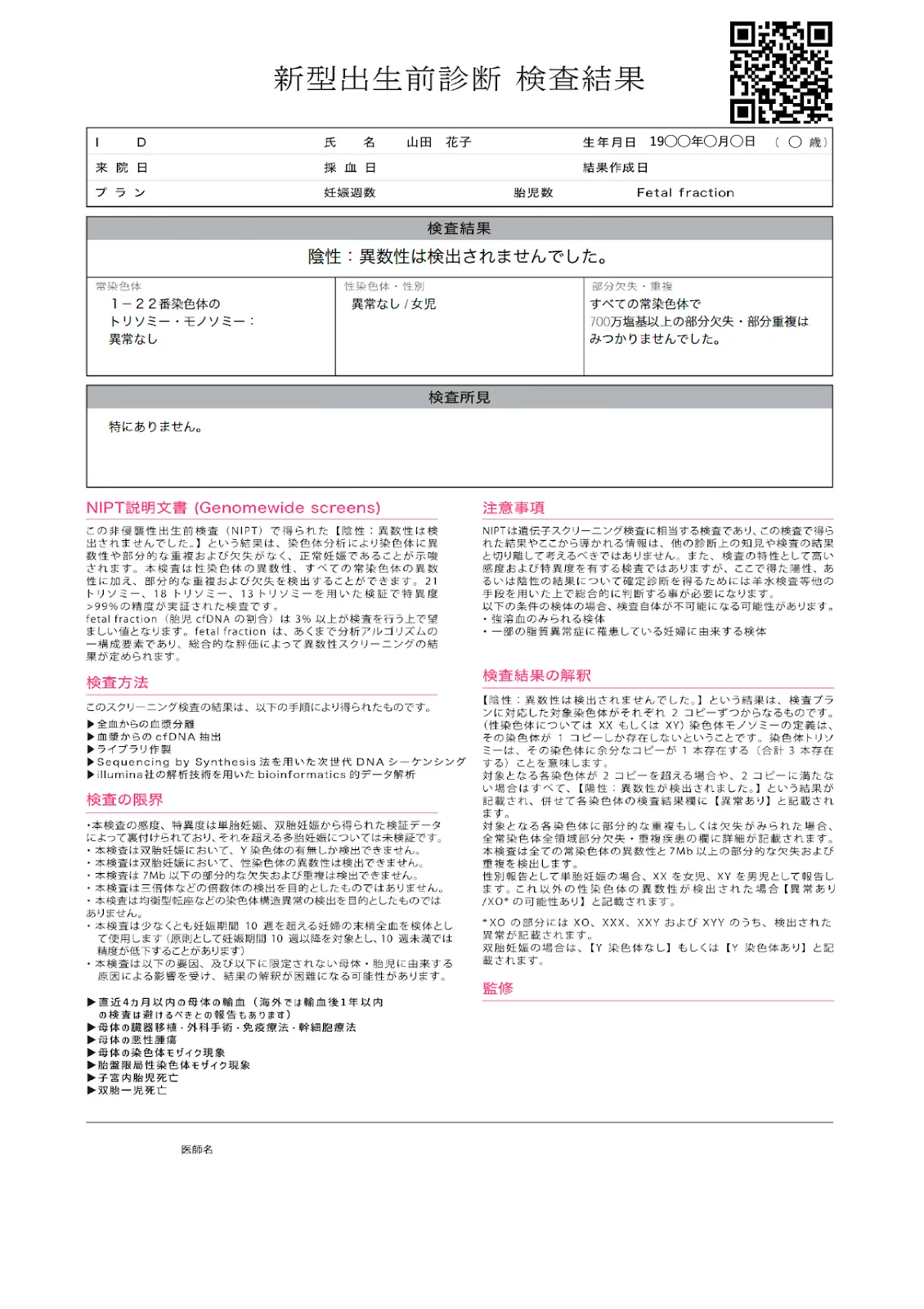
*A sample of the actual test result report created by the Tokyo Hygiene Laboratory
-
[Negative Report when Tested with Medicover Equipment]
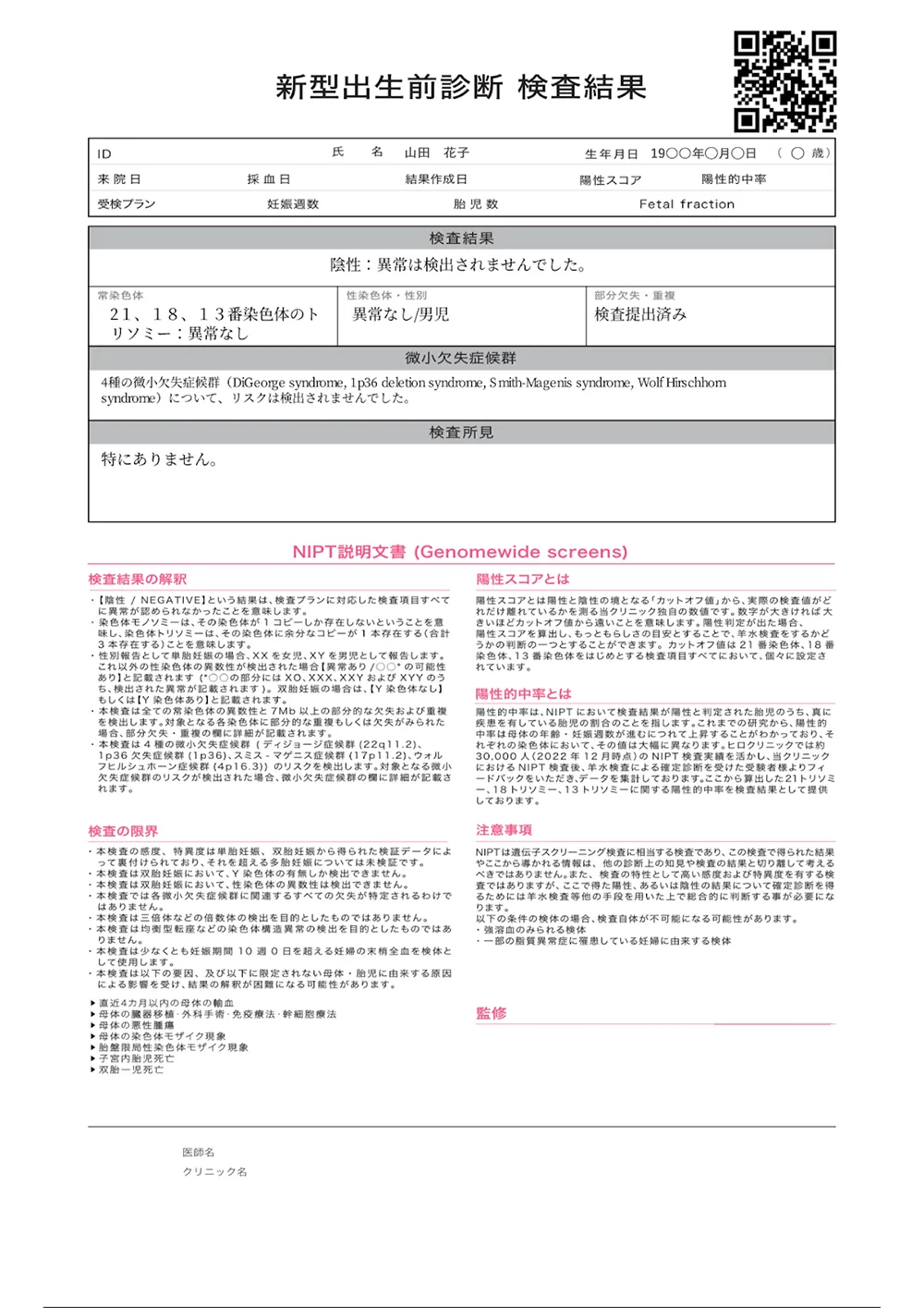
*A sample of the actual test result report created by the Tokyo Hygiene Laboratory
①FF (Fetal Fraction) Percentage of fetal cfDNA
②Displayed in red when positive.
③Positive Predictive Value
Calculated based on the gestational age and age of the pregnant woman. It is not related to genetic information.
④Positive Score
A value that shows how far it deviates from the normal value. It indicates the degree of positivity.
*Results may differ between Illumina and Medicover.
*In Early testing, the tests may differ between the first and second tests.
[Positive Report when Tested with Illumina Equipment]
Trisomy 21
[Positive Report when Tested with Illumina Equipment]
Trisomy 21 (Low Positive Score)
[Positive Report when Tested with Illumina Equipment]
Trisomy 21 (Low Positive Score)
[Positive Report when Tested with Medicover Equipment]
Trisomy 21
[Positive Report when Tested with Medicover Equipment]
Trisomy 21
[Positive Report when Tested with Medicover Equipment]
Trisomy 21 Borderline
◆Overview of NIPT Explanation
NIPT Explanation Document (Genomewide screens)
This test can detect not only sex chromosome aneuploidy but also aneuploidy of all autosomes, as well as partial duplications and deletions. The report emphasizes that the specificity for major chromosomal abnormalities, including Trisomy 21, Trisomy 18, and Trisomy 13, is validated at 99%.
Test Method
NIPT is performed by extracting cfDNA from plasma after blood collection and analyzing it using next-generation sequencing technology. This advanced process is supported by Illumina's cutting-edge analytical technology.
Limitations and Precautions of the Test
There are limitations to the test, and it is based on data from singleton and twin pregnancies but has not been validated for multiple pregnancies. Additionally, it is important to consider the test results in conjunction with other medical information. For both positive and negative results, additional diagnostic procedures such as amniocentesis may be necessary.
Interpretation of Test Results
A "negative" result indicates that the tested chromosomes have a normal copy number. If chromosomal abnormalities are detected, detailed guidance is provided along with the specific situation.
The NIPT report from the Tokyo Hygiene Laboratory is provided to medical institutions through advanced medical technology and meticulous testing processes. The Tokyo Hygiene Laboratory strives daily to protect the health and well-being of each examinee, ensuring that medical institutions and examinees can obtain valuable information to support better medical decisions.
◆Advantages and Disadvantages of NIPT
Advantages
- No Risk to the Fetus
The test is conducted only by blood collection, so there is no direct risk to the fetus. - Early Testing is Possible
Testing can be conducted earlier compared to conventional methods. - High Test Accuracy
High sensitivity and specificity allow for more accurate test results.
Disadvantages
- Risk of False Positives
As it is a screening test, there is a possibility of false positives.

